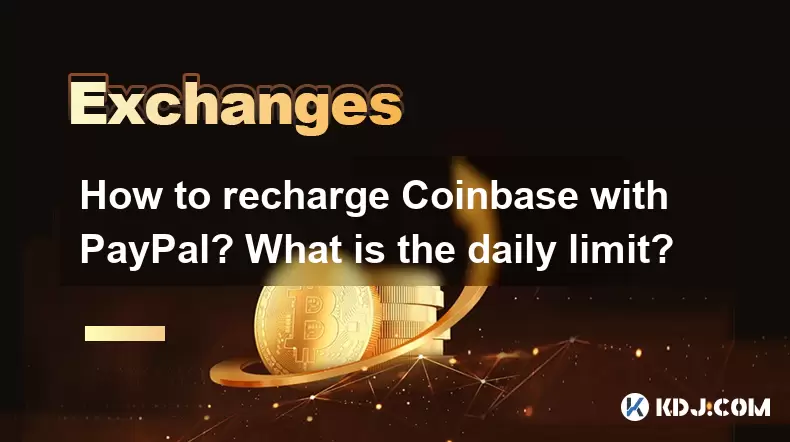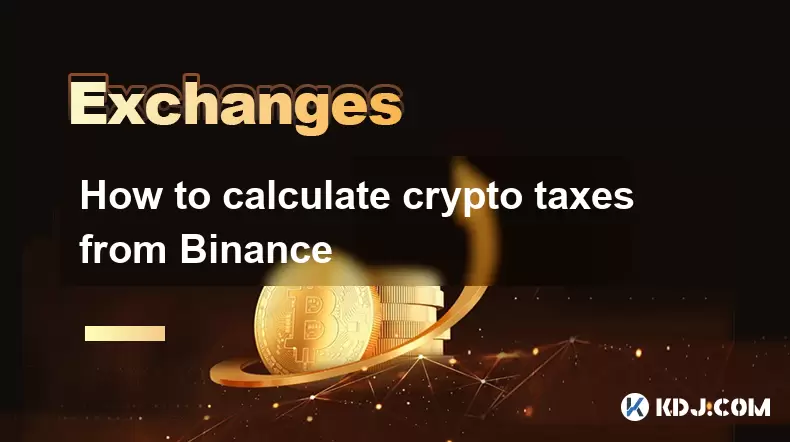-
 Bitcoin
Bitcoin $117500
2.15% -
 Ethereum
Ethereum $3911
6.19% -
 XRP
XRP $3.316
10.79% -
 Tether USDt
Tether USDt $1.000
0.01% -
 BNB
BNB $787.2
2.24% -
 Solana
Solana $175.2
4.15% -
 USDC
USDC $0.9999
0.00% -
 Dogecoin
Dogecoin $0.2225
8.40% -
 TRON
TRON $0.3383
0.28% -
 Cardano
Cardano $0.7868
6.02% -
 Stellar
Stellar $0.4382
9.34% -
 Hyperliquid
Hyperliquid $40.92
7.56% -
 Sui
Sui $3.764
7.63% -
 Chainlink
Chainlink $18.48
10.66% -
 Bitcoin Cash
Bitcoin Cash $582.1
1.88% -
 Hedera
Hedera $0.2601
6.30% -
 Avalanche
Avalanche $23.33
4.94% -
 Ethena USDe
Ethena USDe $1.001
0.02% -
 Litecoin
Litecoin $122.3
2.04% -
 UNUS SED LEO
UNUS SED LEO $8.969
-0.27% -
 Toncoin
Toncoin $3.339
0.86% -
 Shiba Inu
Shiba Inu $0.00001287
4.30% -
 Uniswap
Uniswap $10.43
7.38% -
 Polkadot
Polkadot $3.861
5.08% -
 Dai
Dai $1.000
0.02% -
 Bitget Token
Bitget Token $4.513
3.41% -
 Monero
Monero $267.7
-6.18% -
 Cronos
Cronos $0.1499
4.14% -
 Pepe
Pepe $0.00001110
5.15% -
 Aave
Aave $284.9
8.28%
How to recharge Coinbase with PayPal? What is the daily limit?
To recharge your Coinbase account with PayPal, ensure both accounts are verified, select your crypto, and authorize the payment, noting the $25,000 daily limit and potential fees.
May 18, 2025 at 05:14 am

Recharging your Coinbase account with PayPal is a convenient way to fund your cryptocurrency purchases. In this guide, we will walk you through the steps to add funds to your Coinbase account using PayPal, and we will also discuss the daily limits associated with this payment method.
h3 Understanding Coinbase and PayPal Integration
Before diving into the steps, it's important to understand the integration between Coinbase and PayPal. Coinbase is a leading cryptocurrency exchange that allows users to buy, sell, and store various cryptocurrencies. PayPal, on the other hand, is a widely used online payment platform that allows users to send and receive money. The integration of these two platforms enables Coinbase users to directly fund their accounts using their PayPal balances.
h3 Prerequisites for Recharging Coinbase with PayPal
To recharge your Coinbase account with PayPal, you need to meet certain prerequisites. First, you must have a verified Coinbase account. This involves completing the identity verification process, which typically requires providing personal information such as your name, address, and a government-issued ID. Second, you need a verified PayPal account with sufficient funds or a linked bank account. Lastly, ensure that your PayPal account is linked to the same email address used for your Coinbase account.
h3 Step-by-Step Guide to Recharging Coinbase with PayPal
Here are the detailed steps to recharge your Coinbase account using PayPal:
- Log into your Coinbase account: Open your web browser and navigate to the Coinbase website. Enter your email address and password to log in to your account.
- Navigate to the Buy/Sell section: Once logged in, click on the "Buy/Sell" tab located at the top of the page.
- Select the cryptocurrency you want to purchase: Choose the cryptocurrency you wish to buy from the list of available options.
- Enter the amount you want to spend: Input the amount you want to spend in your local currency. Coinbase will automatically convert this amount into the equivalent amount of cryptocurrency.
- Choose PayPal as your payment method: In the payment method section, select PayPal from the list of available options.
- Review and confirm the transaction: Double-check the details of your transaction, including the amount and the cryptocurrency you are purchasing. Click on the "Buy" button to proceed.
- Authorize the payment on PayPal: You will be redirected to the PayPal website to authorize the payment. Log into your PayPal account and confirm the transaction.
- Return to Coinbase: After authorizing the payment, you will be redirected back to Coinbase. The funds will be added to your Coinbase account, and you will receive a confirmation email.
h3 Daily Limit for Recharging Coinbase with PayPal
The daily limit for recharging your Coinbase account with PayPal varies depending on several factors, including your account's verification level and the country you are located in. For most users, the daily limit is set at $25,000. However, this limit can be lower for new accounts or accounts that have not completed the full verification process. To increase your daily limit, you may need to provide additional verification documents or wait for a certain period of time after your account is created.
h3 Potential Fees and Considerations
When recharging your Coinbase account with PayPal, it's important to be aware of potential fees. Coinbase charges a fee for transactions made with PayPal, which typically ranges from 3.99% to 4.5% of the transaction amount. Additionally, PayPal may also charge a fee for the transaction, depending on your account type and the country you are located in. Before proceeding with the transaction, make sure to review the total fees to avoid any surprises.
h3 Troubleshooting Common Issues
If you encounter any issues while recharging your Coinbase account with PayPal, here are some common problems and their solutions:
- Payment not processing: If your payment is not processing, ensure that you have sufficient funds in your PayPal account. Also, check if there are any restrictions on your PayPal account that may prevent the transaction from going through.
- Transaction declined by PayPal: If PayPal declines the transaction, it could be due to security measures or insufficient funds. Contact PayPal's customer support for more information on why the transaction was declined.
- Verification issues: If you encounter verification issues, make sure that your Coinbase and PayPal accounts are fully verified. If you are still having trouble, contact Coinbase's customer support for assistance.
h3 Frequently Asked Questions
Q: Can I use a business PayPal account to recharge my Coinbase account?
A: Yes, you can use a business PayPal account to recharge your Coinbase account, provided that the account is verified and linked to the same email address used for your Coinbase account.
Q: Is there a weekly or monthly limit for recharging Coinbase with PayPal?
A: While the daily limit for recharging Coinbase with PayPal is typically $25,000, there may be additional weekly or monthly limits imposed by Coinbase or PayPal. These limits can vary based on your account's verification level and other factors.
Q: Can I cancel a PayPal transaction to Coinbase if it has not been processed yet?
A: Yes, you can cancel a PayPal transaction to Coinbase if it has not been processed yet. To do this, log into your PayPal account, go to the "Activity" section, find the pending transaction, and click on "Cancel" or "Stop" to cancel the payment.
Q: Are there any countries where recharging Coinbase with PayPal is not available?
A: Yes, recharging Coinbase with PayPal may not be available in certain countries due to regulatory restrictions or other factors. It's best to check Coinbase's website or contact their customer support to confirm if this payment method is available in your country.
Disclaimer:info@kdj.com
The information provided is not trading advice. kdj.com does not assume any responsibility for any investments made based on the information provided in this article. Cryptocurrencies are highly volatile and it is highly recommended that you invest with caution after thorough research!
If you believe that the content used on this website infringes your copyright, please contact us immediately (info@kdj.com) and we will delete it promptly.
- Ethereum, Staking Yields, and DeFi Exposure: A New Era for Investors?
- 2025-08-08 15:10:12
- Unilabs Pumps MIA, Binance Coin Bouncing Back, and Ethereum's Bearish Blues
- 2025-08-08 15:10:12
- Ethereum's Wyckoff Markup and Market Rotation: A New Era?
- 2025-08-08 15:30:12
- Ethereum, Vitalik Buterin, and the Overleveraged Game: A Balancing Act
- 2025-08-08 15:30:12
- Ethereum, Corporate Treasuries, and Vitalik Buterin: A New Era for ETH?
- 2025-08-08 15:36:08
- BNB Price, Binance Staking, and SEC Concerns: What's the Deal?
- 2025-08-08 15:36:08
Related knowledge

How to use margin trading on Poloniex
Aug 08,2025 at 09:50am
Understanding Margin Trading on Poloniex

How to use advanced trading on Gemini
Aug 08,2025 at 04:07am
Understanding Advanced Trading on GeminiAdvanced trading on Gemini refers to a suite of tools and order types designed for experienced traders who wan...

How to deposit USD on Bitstamp
Aug 07,2025 at 05:18pm
Understanding Bitstamp and USD DepositsBitstamp is one of the longest-standing cryptocurrency exchanges in the industry, offering users the ability to...

How to use the Kraken Pro interface
Aug 08,2025 at 09:57am
Understanding the Kraken Pro Interface LayoutThe Kraken Pro interface is designed for both novice and experienced traders seeking a streamlined experi...

How to find my transaction ID on Gemini
Aug 08,2025 at 12:50am
Understanding the Transaction ID in Cryptocurrency ExchangesA transaction ID (TXID) is a unique alphanumeric string that identifies a specific transfe...

How to calculate crypto taxes from Binance
Aug 08,2025 at 07:56am
Understanding Cryptocurrency Taxation on BinanceCalculating crypto taxes from Binance requires a clear understanding of how tax authorities classify d...

How to use margin trading on Poloniex
Aug 08,2025 at 09:50am
Understanding Margin Trading on Poloniex

How to use advanced trading on Gemini
Aug 08,2025 at 04:07am
Understanding Advanced Trading on GeminiAdvanced trading on Gemini refers to a suite of tools and order types designed for experienced traders who wan...

How to deposit USD on Bitstamp
Aug 07,2025 at 05:18pm
Understanding Bitstamp and USD DepositsBitstamp is one of the longest-standing cryptocurrency exchanges in the industry, offering users the ability to...

How to use the Kraken Pro interface
Aug 08,2025 at 09:57am
Understanding the Kraken Pro Interface LayoutThe Kraken Pro interface is designed for both novice and experienced traders seeking a streamlined experi...

How to find my transaction ID on Gemini
Aug 08,2025 at 12:50am
Understanding the Transaction ID in Cryptocurrency ExchangesA transaction ID (TXID) is a unique alphanumeric string that identifies a specific transfe...

How to calculate crypto taxes from Binance
Aug 08,2025 at 07:56am
Understanding Cryptocurrency Taxation on BinanceCalculating crypto taxes from Binance requires a clear understanding of how tax authorities classify d...
See all articles

























































































